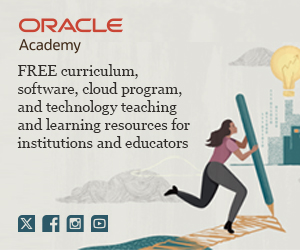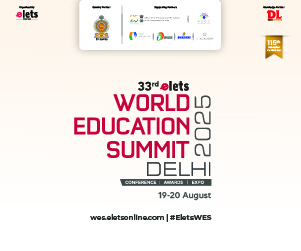After the board exam season it's now time for the high school kids grow up and hop into various colleges and universities. With the entrance season just beginning and so many options ahead of the students and important choices to make in the months that lie ahead, it seems like testing times are far from over. However, for a large section of students, the exam season has just gathered momentum. Even the confident ones, who are not thinking of backup options one, two and three, have at least half-a-dozen exams ahead of them. What with the IIT-JEE, the All Indian Engineering Entrance Exam (on May 1), the State CET (for the government quota) and the UGET (for the private quota to many of those brand colleges) being the staple set. Add to this the more specialized ones, such as NEST for the Indian Institute of Science, Education and Research, those of the Indian Institutes of Information Technology and various other State entrances and deemed university exams, and the list is exhaustive.
Edinburg University scientists grow kidney in lab
Scientists from the University of Edinburgh in Scotland have claimed to have grown kidneys in a laboratory by manipulating stem cells, a major breakthrough which could help tackle the shortage of organs for transplant. The newly created organs measure half a centimetre in length – the same size as a kidney in a foetus; and, the team hopes the tiny kidneys will be able to grow to maturity after being transplanted into human bodies. The team of scientists has actually used stem cells, which are the building blocks of the body, to form the structure of kidneys. In fact, the kidneys were grown in the lab using a combination of cells from amniotic fluid – the fluid which surrounds all babies in the womb – and animal foetal cells. The technique holds out the prospect of doctors being able to collect amniotic fluid at birth to be stored until needed at a later date if a patient develops kidney disease, say the scientists. The patient's own amniotic fluid cells can then be used as the base for creating a new kidney. Using the patient's own cells will also end the problem of rejection that arises when an organ from a deceased donor is used. Team leader Prof Jamie Davies said: “The idea is to start with human stem cells and end up with a functioning organ. If you have got a bunch of stem cells sitting in a test tube, that's a long way from being a beautifully, anatomically organized organ like a kidney that is a complicated structure. “So we are working on how you turn cells floating about in liquid into something as precisely arranged as a kidney. We have made pretty good progress with that. We can make something that has the complexity of a normal, foetal kidney, but not an adult one yet.” To get to the stage where transplants into humans may be possible, research teams in Scotland and the US have been working on the different techniques required. A team in Michigan has taken embryonic stem cells and manipulated them, using chemicals, to become kidney stem cells. Using a related technique, the scientists in Edinburgh were able to create human kidney cells from human amniotic fluid stem cells combined with animal foetal kidney cells. The scientists now want to work out what signals are being passed between the two cell types to make them become kidneys, so they can achieve the same result using only human amniotic stem cells. “At the moment we throw amniotic fluid away when babies are born. But if we kept it and froze down the stem cells of everybody born in the UK, there would be cells that could build kidneys waiting for them, frozen, in case they ever needed them. “It wouldn't be that expensive. It sounds a bit like science fiction-like, but actually it's not. Freezing a few cells is cost-effective compared with the cost of keeping someone on dialysis for years,” Davies said.
MCI to create
The Board of Governors of the Medical Council of India (MCI) has recommended creation of an “Indian Medical Graduate,” who will have necessary competence to assume his or her role as a health care provider. The 'Indian Medical Graduate' will have to pass an exit exam or a licentiate examination after an internship to get license to practice anywhere in the country. MCI has proposed major changes in the undergraduate curriculum and training aimed at meeting the twin demand of having more graduates and maintaining the quality of education. MCI also hopes that the 'Indian Medical Graduate' will, at the time of graduation, effectively fulfill the roles of clinician, leader, communicator and life-long learner, and be a professional with a set of competencies. The national-level exit exam is expected to set a standard for doctors. The MCI also proposes to introduce the National Eligibility-cum-Entrance Test from 2012. The licentiate system, if approved, would be optional between 2012 and 2016, but mandatory thereon. The MCI has proposed to start a two-month foundation course after admission to MBBS course to prepare students to study medicine effectively. This would help in orienting students to national health scenarios, medical ethics, health economics, learning skills and communication, life support, biohazard and environment safety. The new curriculum has been structured to facilitate horizontal and vertical integration between disciplines and bridge the gaps between theory and practice. In the first year, focus would be on basic and laboratory sciences, while in the second and third years, focus would be on clinical exposure and learning. Clinical training would start in the first year and there would be more focus on common problems seen in outpatients and emergency settings.
Tamil- new language option from NIOS
National Institute of Open Schooling (NIOS) will be offering Tamil as a new language option for students pursuing higher secondary examination from the institute from the next academic year in Tamil Nadu. The introduction of Tamil is measured as an initiative to bring in more number of students to pursue their courses from NIOS which is presently offering English, Hindi, Sanskrit and Urdu. V.S. Raveendran, regional director, NIOS, said that it had been an important reason for lack of demand of NIOS in Tamil Nadu but with its introduction we hope to serve the students with the right deliverables. He said that there have also been requests to offer Tamil as a medium of instruction at the secondary level, but it is still under consideration. Of the 27 subjects offered in the NIOS syllabus, a student can choose a minimum of five subjects. “In NIOS, no language and subject is compulsory. The pass percentage is considered with at least one language and three non-language papers. The choice is up to the student,” he said. According to teachers, offering more choice would help students from a Tamil medium background and with difficulty in English study further. It was only three years back that Tamil was introduced at the secondary level. “Some find it easy to write in their mother tongue, so we have the option for students taking the exam. It would also help secondary level students continue at the higher secondary level,” said Mr. Raveendran.
APMDC to educate tribals as per CSR
The Andhra Pradesh state government enterprise, AP Mineral Development Corporation Ltd, has resolved to spend 20% of the amount realised from M/s. Orient Cements towards higher education of tribals in Utnoor agency area of Adilabad district, Andhra Pradesh. Orient Cements is MDC's joint venture company that extracts limestone in the agency area of Adilabad. Even as a debate rages in the country on finalising the quantum of mining profits to be shared towards corporate social responsibility, a state government enterprise has taken the lead by deciding to spend 20% of the profits towards higher education of tribals in Adilabad. Official sources said the joint venture company had paid Rs 3 crore as royalty to state government and the net profit of the company was around Rs 3 crore. “An amount of Rs 60 lakh has been earmarked to cater to the needs of higher education among tribals in the agency area. The Utnoor Integrated Tribal Development Agency (ITDA) project officer has been entrusted with the responsibility of ensuring higher education to tribals in the area. We have finalised the guidelines of the policy regarding spending 20 % of profits in consultation with the tribal welfare commissioner,” said APMDC MD Praveen Prakash. In fact, the proposed Mines and Minerals Bill makes it mandatory for 26% of mining profits to be shared among locals. It aims to ensure that tribals are not alienated from their own land. “It will be mandatory for companies keen on availing a mining license to make a full disclosure of their mine closure plans (filling up of old mines) and Corporate Social Responsibility (CSR) activities. These companies are duty-bound to furnish a credible CSR blueprint before applying for a mining license,” said a senior official of the department of mines. As of now, Indian companies earmark anywhere between 3% and 5% of their net profits towards programmes being carried out under corporate social responsibility.
Matrix Partners India puts in Rs 50Cr in Education Service Provider
Matrix Partners India has invested Rs 50 crore in the first institutional round of funding of Maharana Infrastructure and Professional Services Private Ltd (MIPS). Matrix, an investment firm with Rs 1,500 crore under management, is the sole investor to participate in this round. Matrix This investment marks Matrix's third deal in the fast-growing education space. Its other education portfolio firms include test prep firm FIIT JEE and pre-school chain Tree House. With this round, Matrix India director Amit Kapoor will join the board of MIPS, a service provider to higher education institutes in northern India. “MIPS has an innovative business model to address the needs of the country's fast-growing education sector. It is well-positioned to become a dominant player in India with its focus on providing state-of-the-art facilities and high quality, job-oriented training,” said Kapoor. Matrix Partners started in Boston in 1977 as Hellman Ferri Investment Associates. In 1982, Paul Ferri re-established the firm as Matrix Partners while Matrix Partners India was established in 2006. “MIPS provides curriculum support, marketing, HR consulting and infrastructure services to educational institutes. The company aims to become the market leader in northern and central India,” said Shailendra Bhadauria, chairman and managing director of Maharana Infrastructure and Professional Services Pvt Ltd. MIPS counts the MPGI Group as its core client. The group runs 20 courses with 10 campuses and over 10,000 students. The courses offered under the MPGI umbrella include engineering, medical, dental, hospital, pharmacy, mass communication, information technology, K-12 and pre-school. The education sector is seeing high interest in India from both financial and strategic investors. The annual government spend on education is approximately $30 billion with an annual private spend of $43 billion, said a 2010 note from Kaizen Management Advisors, an education-focussed private equity firm. According to data from VCCEdge, there were investments worth $190 million across 23 deals in 2010, compared to 10 deals worth $128 million in 2009.
IGNOU inks pact with leading bird conservatory organization
The Indira Gandhi National Open University's (IGNOUs) Chair for Sustainable Development (CSD) has entered into a pact with the Salim Ali Centre for Ornithology and Natural History (SACON), an organization under the Ministry of Environment and Forests mainly working towards the conservation of nature and natural resources with birds to offer programmes in the area of Environmental Impact Assessment and Ornithology. The Memorandum of Understanding (MoU), signed by the Registrar of the university Mr. U.S.Tolia and Dr. P.A. Azeez on behalf of SACON in the presence of Prof. Latha Pillai and Prof. P.R. Ramanujam, Pro VCs of IGNOU, offers a six month programme called PG Certificate in Environmental Management System and a year-long programme called PG Diploma in Environmental Impact Assessment and Management for students through online mode. The courses are expected to be launched in April 2012. “With fast changing needs we must have people for Environmental Impact Assessment (EIA). We are in a situation where we look at development at the cost of nature. Through the Chair of Sustainability Development we are sensitizing people towards issues which matter for the ecological balance of the country. Besides launching these online diploma programmes we can also look forward for activities like inviting students for bird watching,” said Prof. Latha Pillai, Pro VC, IGNOU. She also cited examples of programmes under the university aiming at bringing environmental sustainability. The course is being planned at a time, when there is a major boost in industrial growth in the country due to economic liberalization and globalization, which is essentially following an unsustainable path by degrading environmental quality and depleting natural resources including the non-renewable resources which are finite in supply. In this juncture, the role of EIA to harmonize the development and bring about sustainability in the country needs to be communicated to a large public cutting across professional interests. Dr. Azeez briefed about SACON and its activities and its involvement in research, extension and outreach programmes. He drew attention to the unorganized development in the country leading to unsustainability in natural resources exploitation and the role of EIA as a tool for sustainable development in India. He also emphasized the issue of lack of skilled personnel for undertaking EIA and the requirement for offering such programmes.
HRD Ministry meets industry leaders for India-US Higher Education Summit 2011
Human Resource Development (HRD) Ministry has conducted a Roundtable meeting on Higher Education headed by Union Minister of HRD, Shri Kapil Sibal. The main motive of the meeting was to prepare agendas for the forthcoming India-US Higher Education Summit. The India-US Higher Education Summit is scheduled to be held on June 15-16, 2011 at Washington DC. Leaders of major industry bodies like CII, FICCI, ASSOCHAM as well as heads of various higher education institutions in the country were present in the meeting and shared their views. Reportedly, some reputed officials from the Ministry of External Affairs were also there in the discussions. The roundtable treasured various initiatives already in progress between the two countries India and US. Some of them are the Obama-Singh Knowledge Initiative, Yale-India Leadership Programme, Fullbright scholarships etc. Sources said that in the meeting, it was decided to take such partnership programmes further through an institutional bilateral mechanism with active participation of the industry. As the result of the Round table, Sibal announced the constitution of the five Working Groups, among the industry leaders and academia.
Higher education loans get momentum in admission season
The education loan portfolio this season shows a gained a momentum and is expected to grow multi-fold. Keeping in mind the admission season in colleges, banks are gearing up to facilitate maximum education loans to students. Education loans have increased to Rs43, 801 crore in the year to February 2011, from Rs36, 522 crore in the previous corresponding period, which is a significant growth of 19.93%, says the latest report of the Reserve Bank of India (RBI). According to a senior official of the Punjab National Bank (PNB), “Our education loan disbursal has been showing significant growth. As of 31 December 2010, we disbursed around Rs2,750 crore towards education from our Rs21,700 crore retail loan portfolio. Going ahead we are optimistic about the growth of this sector.” He added, “Last year we posted a growth of 46% in our education loan portfolio; the current growth is 24%. Though, our volumes are increasing.” Efforts by banks to create awareness and promote education loans are evident. “The sector has grown at 30%-40%. Large numbers of students going for higher education are approaching banks for loans to fund their studies,” said K Unnikrishnan, deputy chief executive, Indian Banks' Association. However, post the global recession of 2008, the education loan portfolio which has the lowest default rate has witnessed increasing cases of defaults. But banks are not too worried as the non-performing loans have come back to earlier levels. Vivek Mhatre, general manager, retail, at Union Bank of India, told Moneylife, “Our NPAs on the education loan portfolio are minimal. Since 2008-09, our portfolio has doubled to Rs1,600 crore and we want to increase it by 30-40%. When a student opts for higher education from a premier institute like Indian Business School or IIM, the default risk is almost zero as these institutes have good placement facilities. Now the season of education loans has begun and we are already receiving a steady stream of proposals.” Mr Mhatre explained that “as per RBI guidelines there is no collateral required for loans up to Rs4 lakh, so this category has some default rate, but we have a monitoring mechanism in place and there is nothing to worry about.” Currently, as per RBI guidelines, banks can provide a maximum loan of Rs10 lakh for studies in India and Rs20 lakh for studies abroad.
DU Department approves Commerce Semester Based Syllabi
Finally the semester-based syllabi has got Delhi University's nod. DU's Department of Commerce showed the green signal for the new syllabi for the Honours Programme and BA Programme Commerce papers. KV Bhanumurthy, Head of the Commerce and Business Department, said that the total workload is absolutely maintained and similarly, the number of lectures will be more or less the same. “Some optional papers have been made compulsory now and all functional areas of management are now mandatory”, added he. According to the sources, the new B.Com Honours course will consist of 26 papers, whereas earlier it was just 22. On the other hand, the B.Com programme will have 24 papers instead of the original 16. Another important change is that the faculty has reduced the number of optional papers from four to only two. The two new compulsory papers of management area are international business and indirect taxation. Sources said that out of the 45 faculty members in the meeting, only one teacher opposed the passing of the new syllabi.



















